Mathematics Notes VIII
Rational Number
Ex 1.1 Class 8 Maths Question 1.
Using appropriate properties find:
Solution:


Ex 1.1 Class 8 Maths Question 2.
Write the additive inverse of each of the following:
(i)
(ii)
(iii)
(iv)
(v)
Solution:
Ex 1.1 Class 8 Maths Question 3.
Verify that -(-x) = x for
(i) x =
(ii) x =
Solution:
Ex 1.1 Class 8 Maths Question 4.
Find the multiplicative inverse of the following:
Solution:

Ex 1.1 Class 8 Maths Question 5.
Name the property under multiplication used in each of the following:

Solution:
(i) Commutative property of multiplication
(ii) Commutative property of multiplication
(iii) Multiplicative inverse property
Ex 1.1 Class 8 Maths Question 6.
Multiply
Solution:
Ex 1.1 Class 8 Maths Question 7.
Tell what property allows you to compute
Solution:
Since a × (b × c) = (a × b) × c shows the associative property of multiplications.
Ex 1.1 Class 8 Maths Question 8.
Is
Solution:
Here -1
Since multiplicative inverse of
Ex 1.1 Class 8 Maths Question 9.
If 0.3 the multiplicative inverse of 3
Solution:
Multiplicative inverse of 0.3 or
Thus, 0.3 is the multiplicative inverse of 3
Ex 1.1 Class 8 Maths Question 10.
Write:
(i) The rational number that does not have a reciprocal.
(ii) The rational numbers that are equal to their reciprocals.
(iii) The rational number that is equal to its negative.
Solution:
(i) 0 is the rational number which does not have its reciprocal
[∵
(ii) Reciprocal of 1 =
Reciprocal of -1 =
Thus, 1 and -1 are the required rational numbers.
(iii) 0 is the rational number which is equal to its negative.
Ex 1.1 Class 8 Maths Question 11.
Fill in the blanks.
(i) Zero has ……….. reciprocal.
(ii) The numbers ……….. and ……….. are their own reciprocals.
(iii) The reciprocal of -5 is ………
(iv) Reciprocal of
(v) The product of two rational numbers is always a …………
(vi) The reciprocal of a positive rational number is ……….
Solution:
(i) no
(ii) -1 and 1
(iii)
(iv) x
(v) rational number
(vi) positive
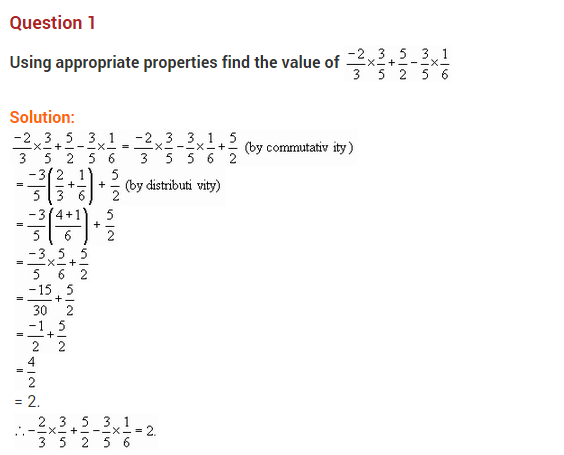











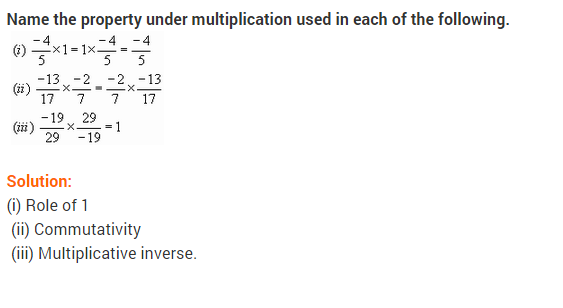

- Chapter 2: Linear Equations in One Variable.
Ex 2.1 Class 8 Maths Question 1.
Solve the equation: x – 2 = 7.
Solution:
Given: x – 2 = 7
⇒ x – 2 + 2 = 7 + 2 (adding 2 on both sides)
⇒ x = 9 (Required solution)Ex 2.1 Class 8 Maths Question 2.
Solve the equation: y + 3 = 10.
Given: y + 3 = 10
⇒ y + 3 – 3 = 10 – 3 (subtracting 3 from each side)
⇒ y = 7 (Required solution)Ex 2.1 Class 8 Maths Question 3.
Solve the equation: 6 = z + 2
Solution:
We have 6 = z + 2
⇒ 6 – 2 = z + 2 – 2 (subtracting 2 from each side)
⇒ 4 = z
Thus, z = 4 is the required solution.Ex 2.1 Class 8 Maths Question 4.
Solve the equations:37 + x =177
Solution: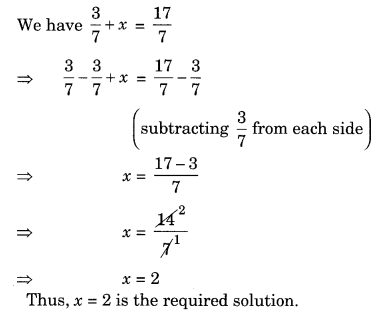
Ex 2.1 Class 8 Maths Question 5.
Solve the equation 6x = 12.
Solution:
We have 6x = 12
⇒ 6x ÷ 6 = 12 ÷ 6 (dividing each side by 6)
⇒ x = 2
Thus, x = 2 is the required solution.Ex 2.1 Class 8 Maths Question 6.
Solve the equationt5 = 10.
Solution:
Givent5 = 10
⇒t5 × 5 = 10 × 5 (multiplying both sides by 5)
⇒ t = 50
Thus, t = 50 is the required solution.Ex 2.1 Class 8 Maths Question 7.
Solve the equation2x3 = 18.
Solution:
We have2x3 = 18
⇒2x3 × 3 = 18 × 3 (multiplying both sides by 3)
⇒ 2x = 54
⇒ 2x ÷ 2 = 54 ÷ 2 (dividing both sides by 2)
⇒ x = 27
Thus, x = 27 is the required solution.Ex 2.1 Class 8 Maths Question 8.
Solve the equation 1.6 =y1.5
Solution:
Given: 1.6 =y1.5
⇒ 1.6 × 1.5 =y1.5 × 1.5 (multiplying both sides by 1.5)
⇒ 2.40 = y
Thus, y = 2.40 is the required solution.Ex 2.1 Class 8 Maths Question 9.
Solve the equation 7x – 9 = 16.
Solution:
We have 7x – 9 = 16
⇒ 7x – 9 + 9 = 16 + 9 (adding 9 to both sides)
⇒ 7x = 25
⇒ 7x ÷ 7 = 25 ÷ 7 (dividing both sides by 7)
⇒ x =257
Thus, x =257 is the required solution.Ex 2.1 Class 8 Maths Question 10.
Solve the equation 14y – 8 = 13.
Solution:
We have 14y – 8 = 13
⇒ 14y – 8 + 8 = 13 + 8 (adding 8 to both sides)
⇒ 14y = 21
⇒ 14y ÷ 14 = 21 ÷ 14 (dividing both sides by 14)
⇒ y =2114
⇒ y =32
Thus, y =32 is the required solution.Ex 2.1 Class 8 Maths Question 11.
Solve the equation 17 + 6p = 9.
Solution:
We have, 17 + 6p = 9
⇒ 17 – 17 + 6p = 9 – 17 (subtracting 17 from both sides)
⇒ 6p = -8
⇒ 6p ÷ 6 = -8 ÷ 6 (dividing both sides by 6)
⇒ p =−86
⇒ p =−43
Thus, p =−43 is the required solution.Ex 2.1 Class 8 Maths Question 12.
Solve the equationx3 + 1 =715
Solution: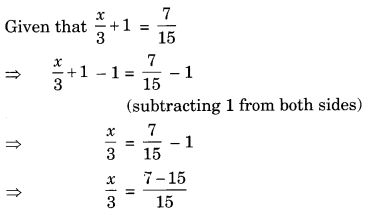
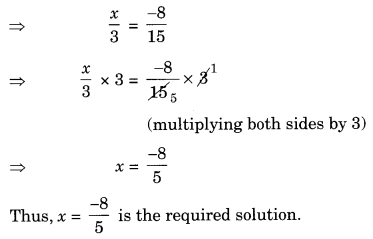
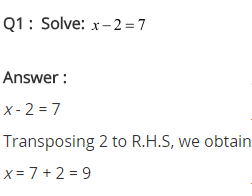
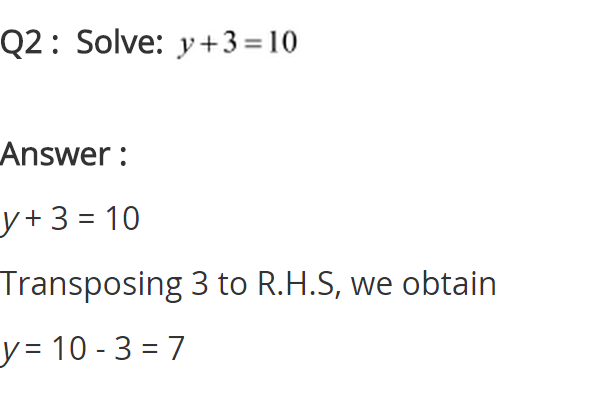
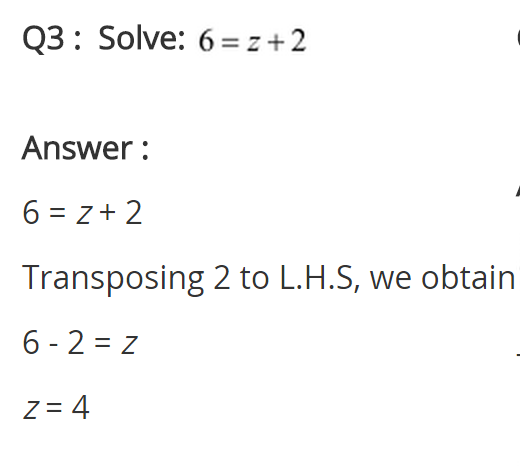
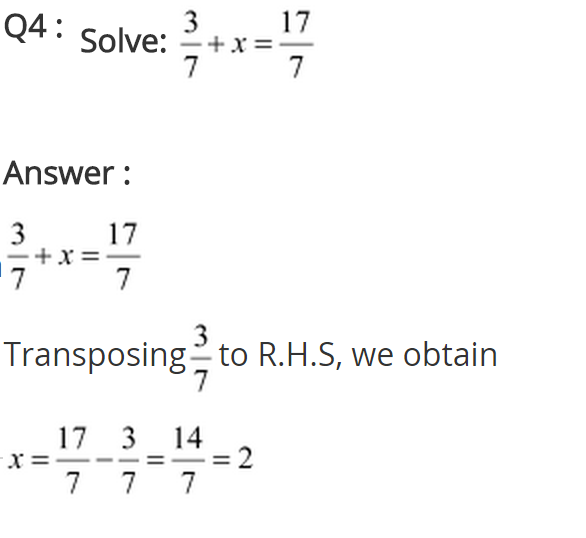
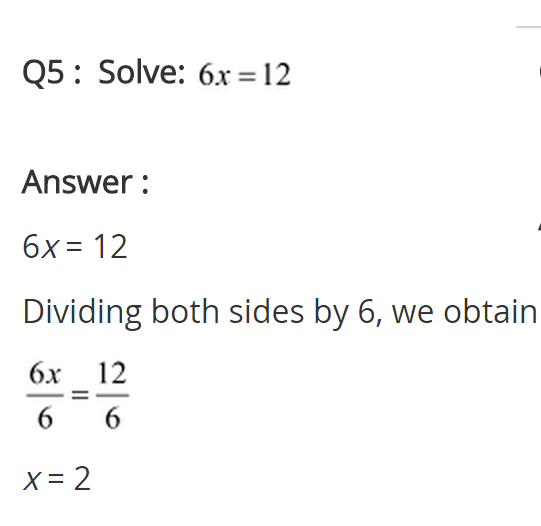
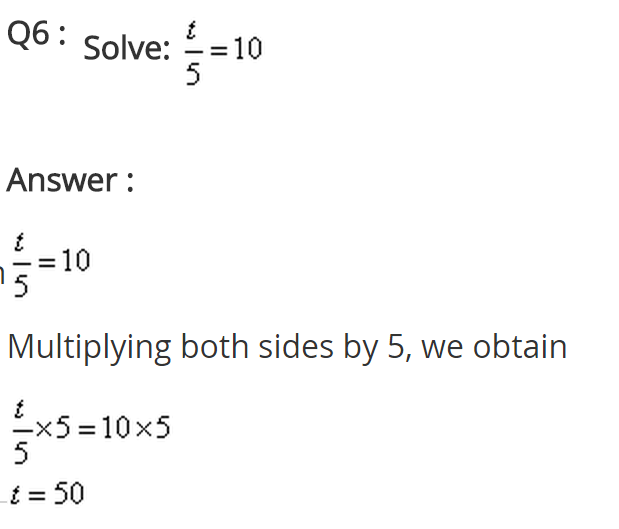
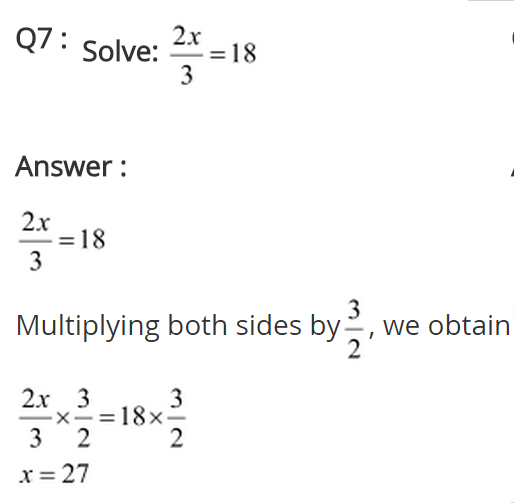
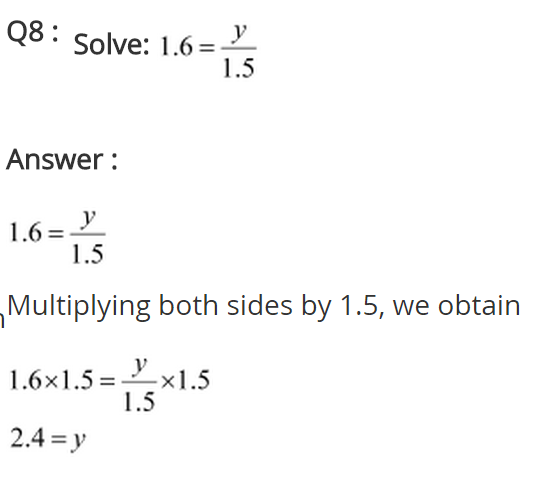
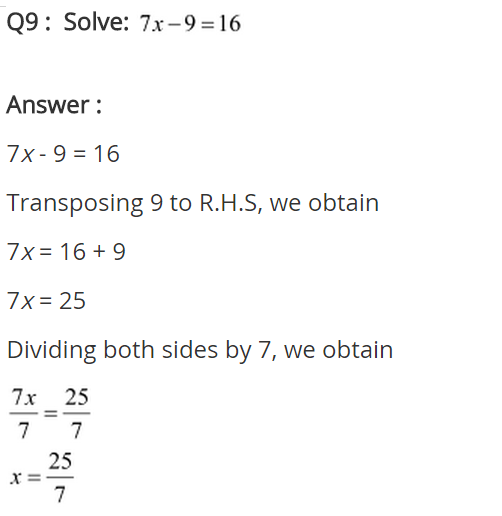
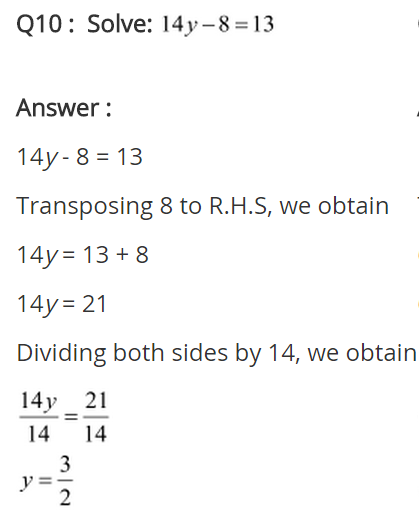
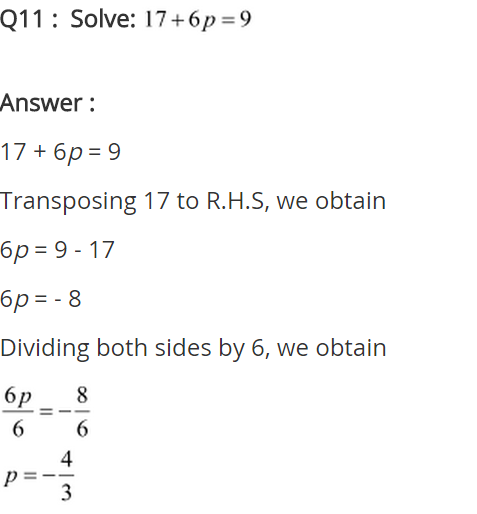
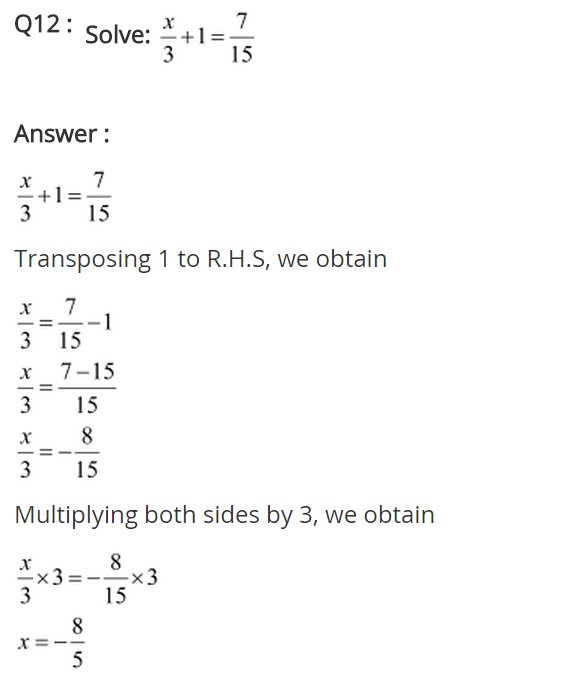
Ch:3 Understanding Quadrilaterals
Ex 3.1 Class 8 Maths Question 1.
Given here are some figures.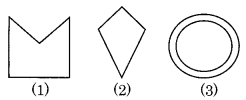
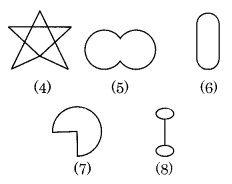
Classify each of the above figure on the basis of the following:
(a) Simple curve
(b) Simple closed curve
(c) Polygon
(d) Convex polygon
(e) Concave polygon
Solution:
(a) Simple curve: (1), (2), (5), (6) and (7)
(b) Simple closed curve: (1), (2), (5), (6) and (7)
(c) Polygon: (1) and (2)
(d) Convex polygon: (2)
(e) Concave polygon: (1)Ex 3.1 Class 8 Maths Question 2.
How many diagonals does each of the following have?
(a) A convex quadrilateral
(b) A regular hexagon
(c) A triangle
Solution:
(a) In Fig. (i) ABCD is a convex quadrilateral which has two diagonals AC and BD.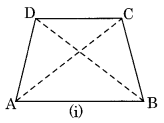
(b) In Fig. (ii) ABCDEF is a regular hexagon which has nine diagonals AE, AD, AC, BF, BE, BD, CF, CE and DF.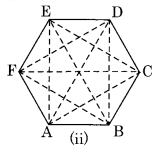
(c) In Fig. (iii) ABC is a triangle which has no diagonal.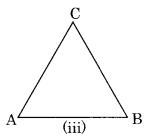
Ex 3.1 Class 8 Maths Question 3.
What is the sum of the measures of the angles of a convex quadrilateral? Will this property hold if the quadrilateral is not convex? (Make a non-convex quadrilateral and verify)
Solution:
In the given figure, we have a quadrilateral ABCD. Join AC diagonal which divides the quadrilateral into two triangles ABC and ADC.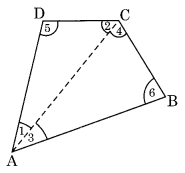
In ∆ABC, ∠3 + ∠4 + ∠6 = 180°…(i) (angle sum property)
In ∆ADC, ∠1 + ∠2 + ∠5 = 180° …(ii) (angle sum property)
Adding, (i) and (ii)
∠1 + ∠3 + ∠2 + ∠4 + ∠5 + ∠6 = 180° + 180°
⇒ ∠A + ∠C + ∠D + ∠B = 360°
Hence, the sum of all the angles of a convex quadrilateral = 360°.
Let us draw a non-convex quadrilateral.
Yes, this property also holds true for a non-convex quadrilateral.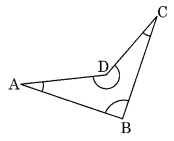
Ex 3.1 Class 8 Maths Question 4.
Examine the table. (Each figure is divided into triangles and the sum of the angles reduced from that).
What can you say about the angle sum of a convex polygon with number of sides?
(a) 7
(b) 8
(c) 10
(d) n
Solution:
From the above table, we conclude that the sum of all the angles of a polygon of side ‘n’
= (n – 2) × 180°
(a) Number of sides = 7
Angles sum = (7 – 2) × 180° = 5 × 180° = 900°
(b) Number of sides = 8
Angle sum = (8 – 2) × 180° = 6 × 180° = 1080°
(c) Number of sides = 10 Angle sum = (10 – 2) × 180° = 8 × 180° = 1440°
(d) Number of sides = n
Angle sum = (n – 2) × 180°Ex 3.1 Class 8 Maths Question 5.
What is a regular polygon? State the name of a regular polygon of
(i) 3 sides
(ii) 4 sides
(iii) 6 sides
Solution:
A polygon with equal sides and equal angles is called a regular polygon.
(i) Equilateral triangle
(ii) Square
(iii) Regular Hexagon
Ex 3.1 Class 8 Maths Question 6.
Find the angle measure x in the following figures: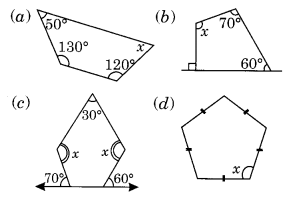
Solution:
(a) Angle sum of a quadrilateral = 360°
⇒ 50° + 130° + 120° + x = 360°
⇒ 300° + x = 360°
⇒ x = 360° – 300° = 60°
(b) Angle sum of a quadrilateral = 360°
⇒ x + 70° + 60° + 90° = 360° [∵ 180° – 90° = 90°]
⇒ x + 220° = 360°
⇒ x = 360° – 220° = 140°
(c) Angle sum of a pentagon = 540°
⇒ 30° + x + 110° + 120° + x = 540° [∵ 180° – 70° = 110°; 180° – 60° = 120°]
⇒ 2x + 260° = 540°
⇒ 2x = 540° – 260°
⇒ 2x = 280°
⇒ x = 140°
(d) Angle sum of a regular pentagon = 540°
⇒ x + x + x + x + x = 540° [All angles of a regular pentagon are equal]
⇒ 5x = 540°
⇒ x = 108°Ex 3.1 Class 8 Maths Question 7.
(a) Find x + y + z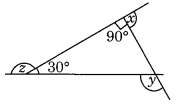
(b) Find x + y + z + w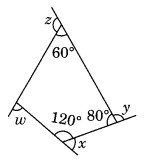
Solution:
(a) ∠a + 30° + 90° = 180° [Angle sum property]
⇒ ∠a + 120° = 180°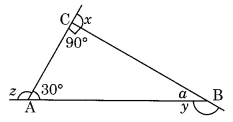
⇒ ∠a = 180° – 120° = 60°
Now, y = 180° – a (Linear pair)
⇒ y = 180° – 60°
⇒ y = 120°
and, z + 30° = 180° [Linear pair]
⇒ z = 180° – 30° = 150°
also, x + 90° = 180° [Linear pair]
⇒ x = 180° – 90° = 90°
Thus x + y + z = 90° + 120° + 150° = 360°
(b) ∠r + 120° + 80° + 60° = 360° [Angle sum property of a quadrilateral]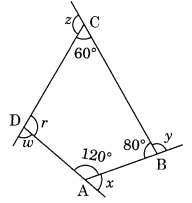
∠r + 260° = 360°
∠r = 360° – 260° = 100°
Now x + 120° = 180° (Linear pair)
x = 180° – 120° = 60°
y + 80° = 180° (Linear pair)
⇒ y = 180° – 80° = 100°
z + 60° = 180° (Linear pair)
⇒ z = 180° – 60° = 120°
w = 180° – ∠r = 180° – 100° = 80° (Linear pair)
x + y + z + w = 60° + 100° + 120° + 80° = 360°.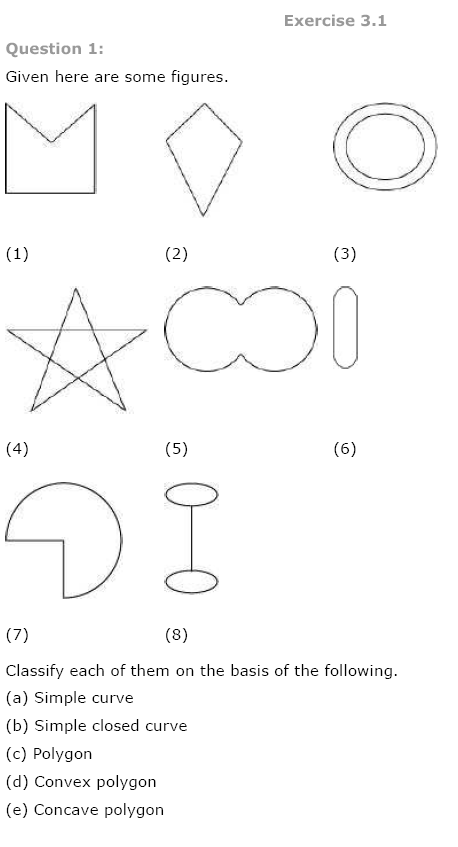
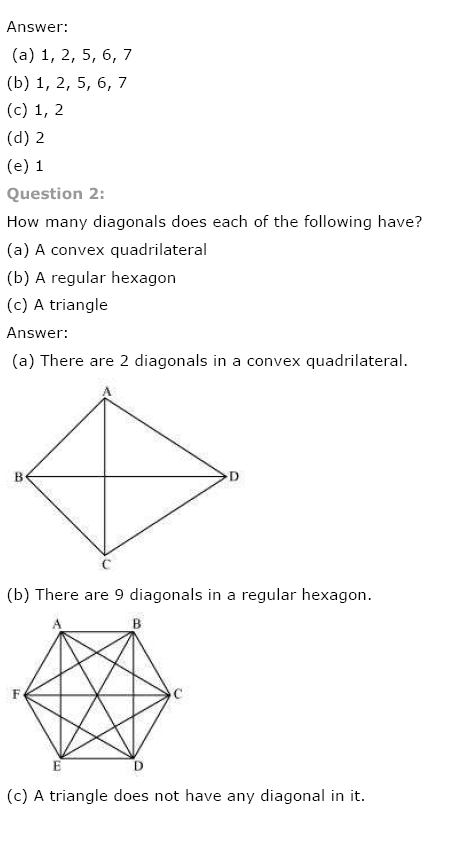
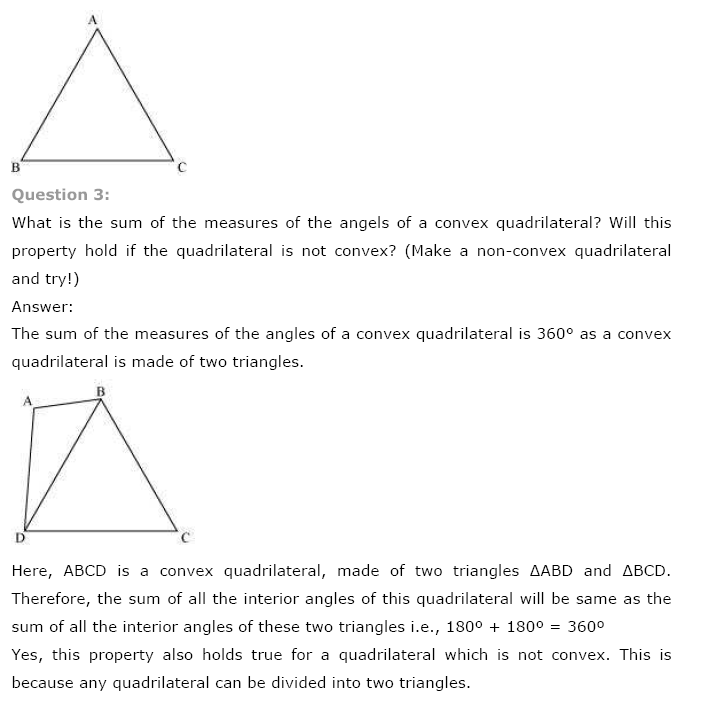
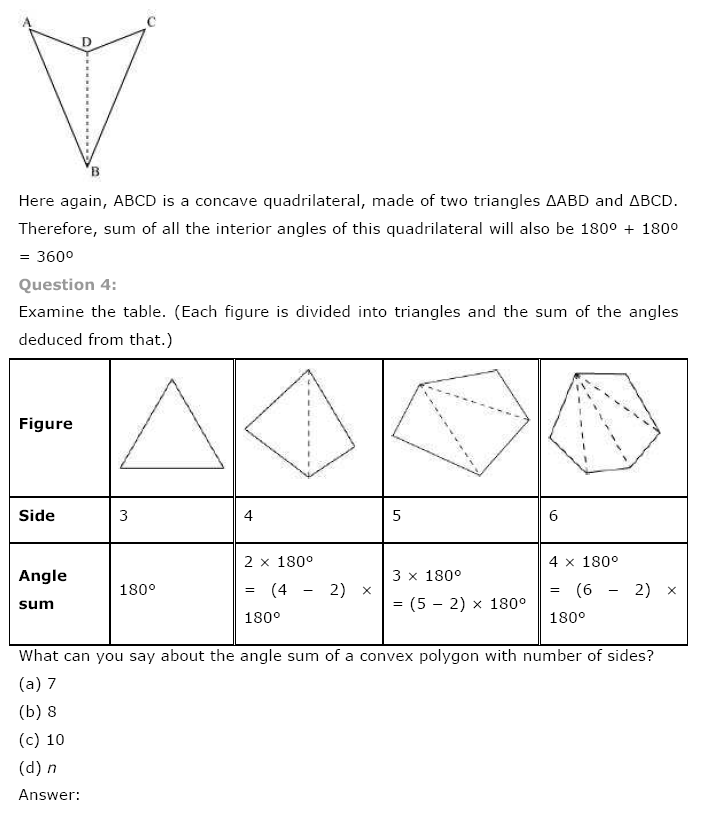
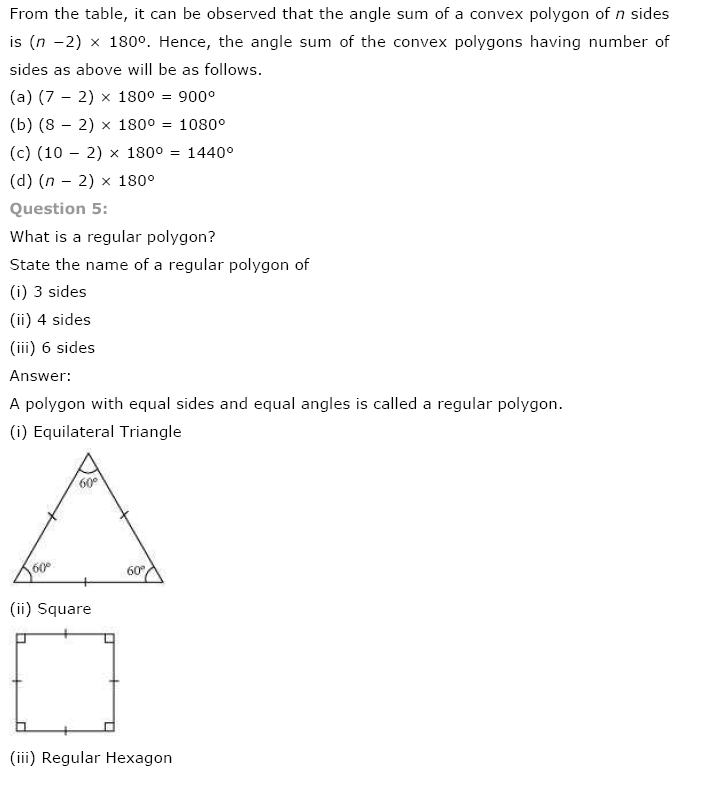
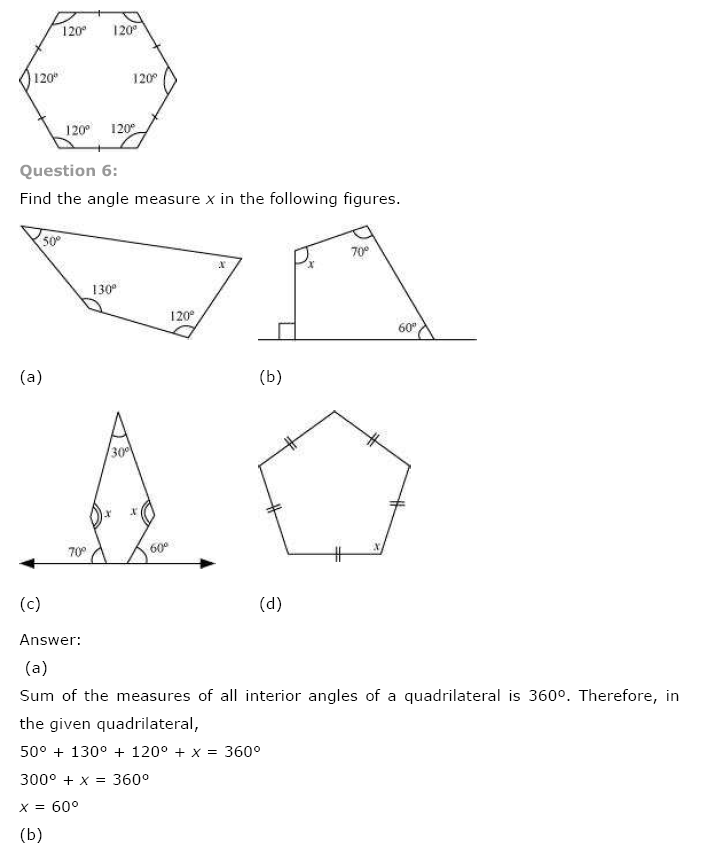
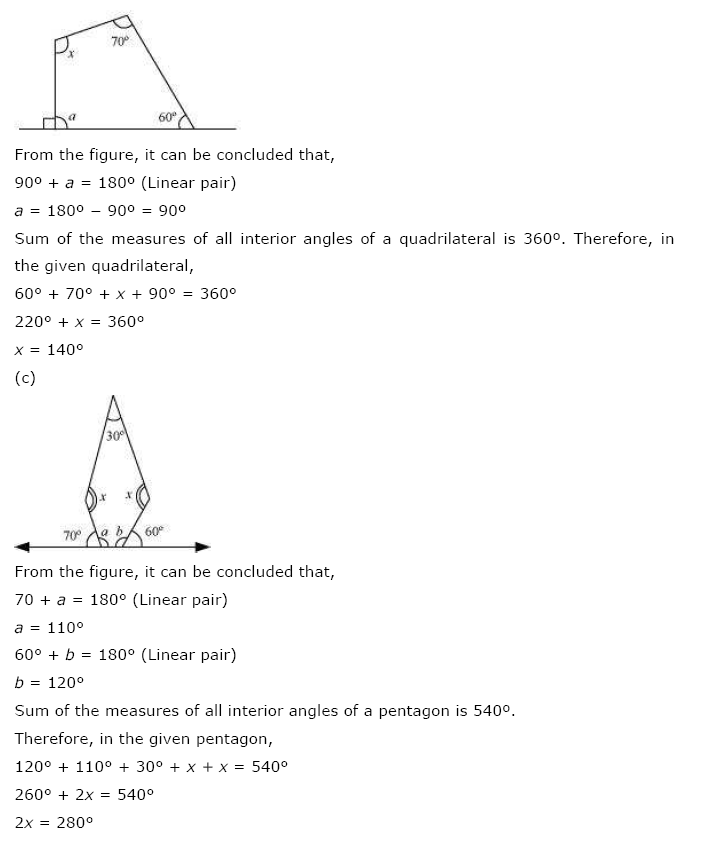
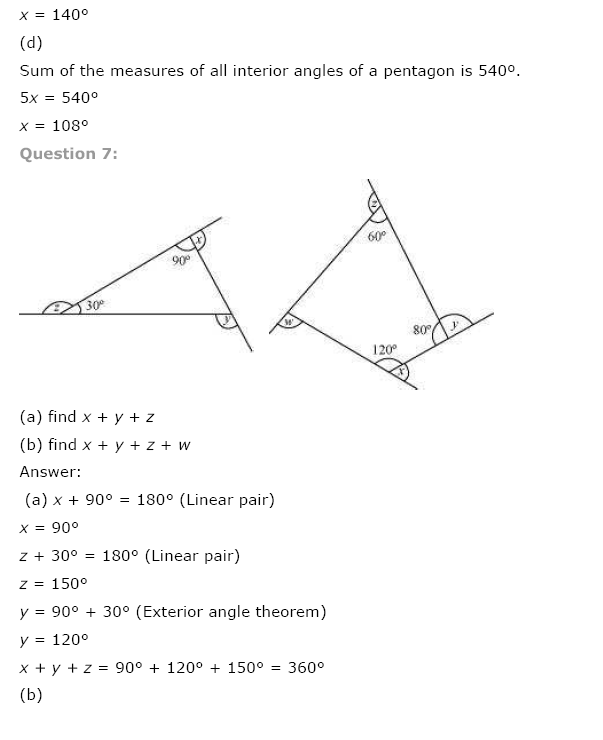
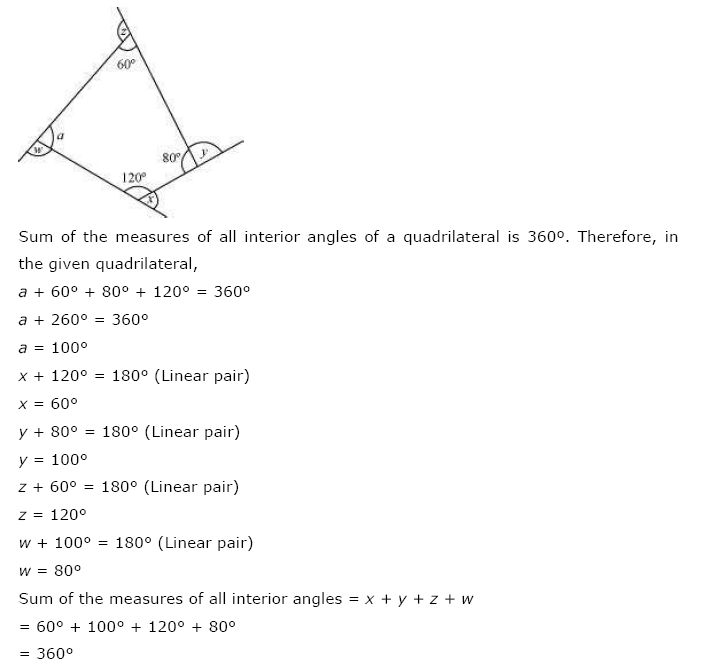
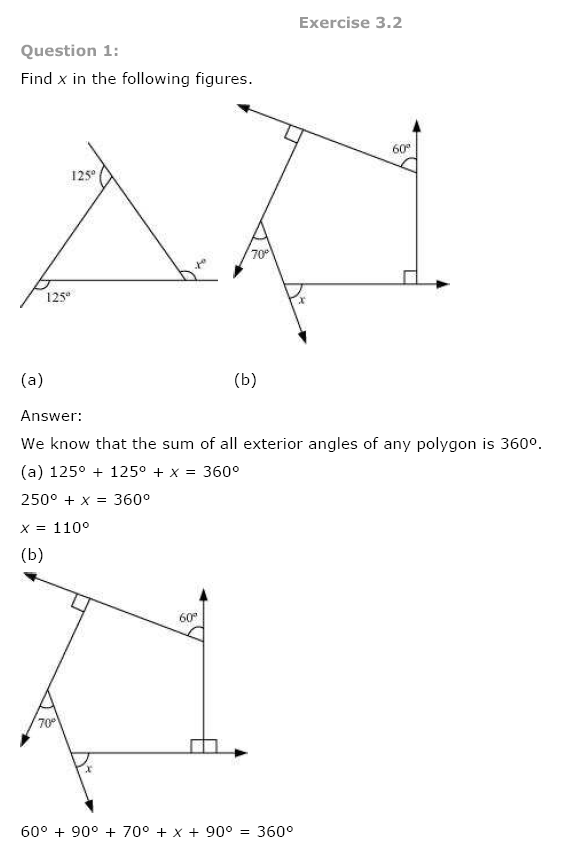
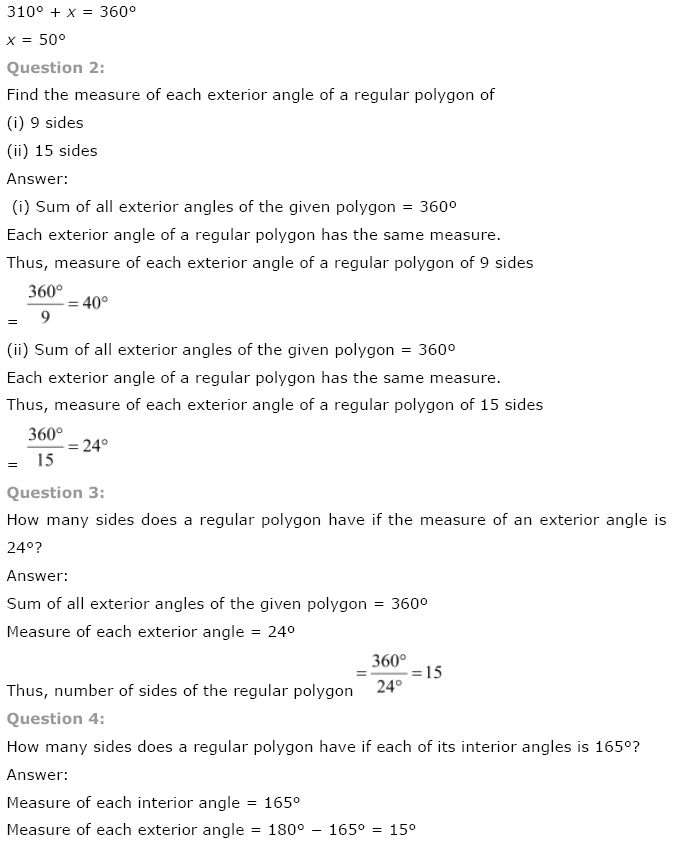
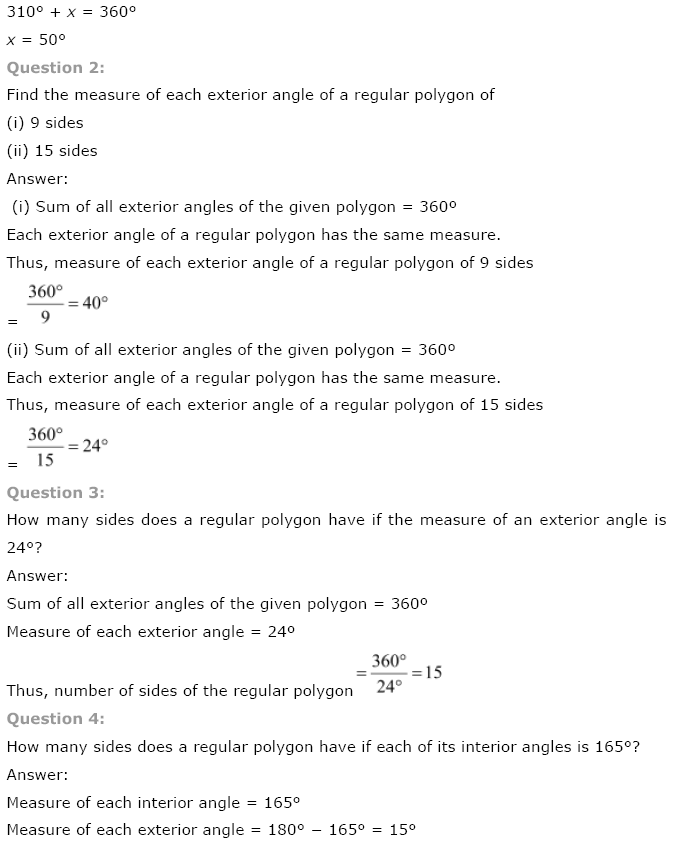
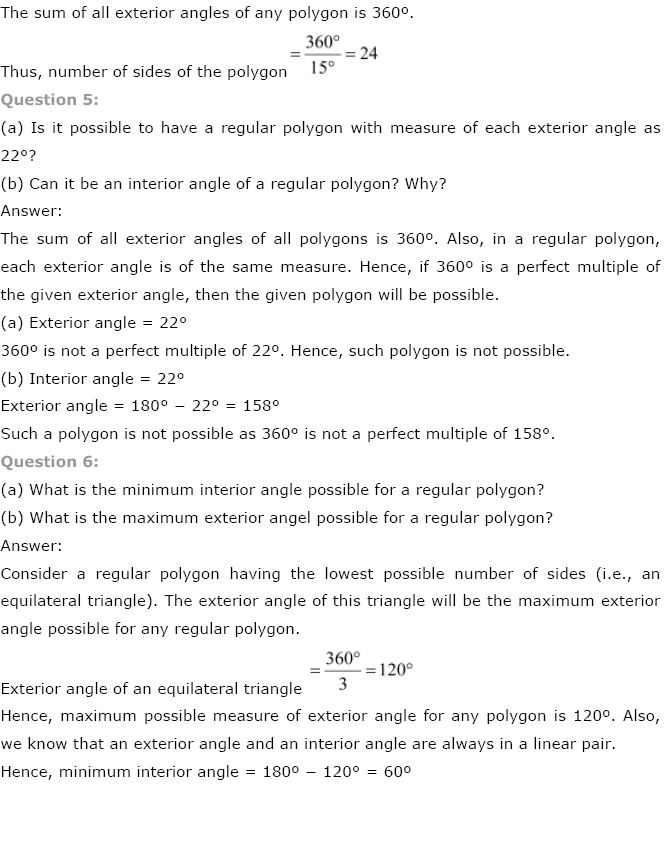
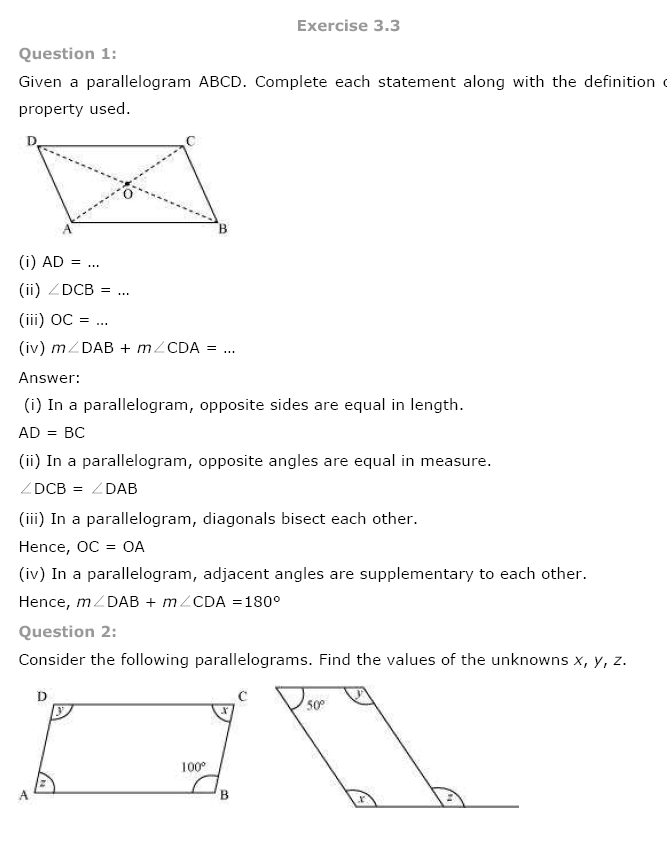
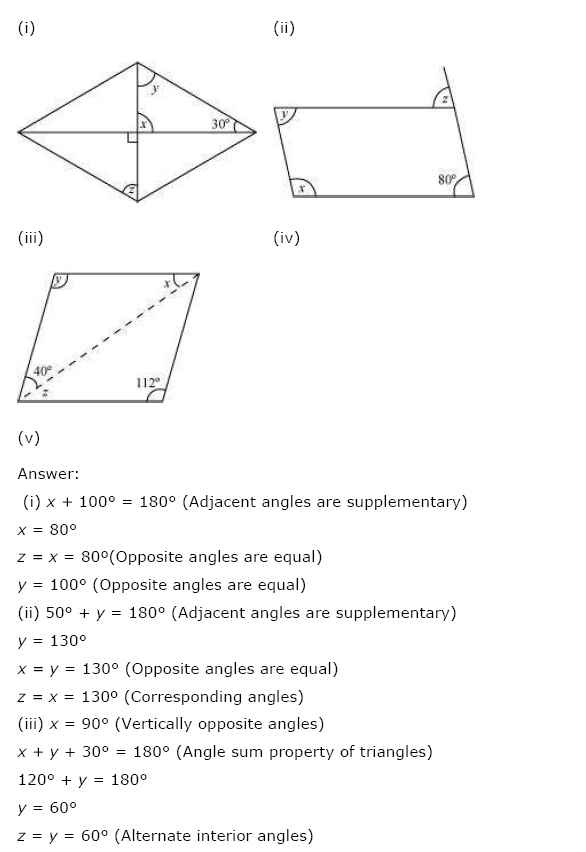
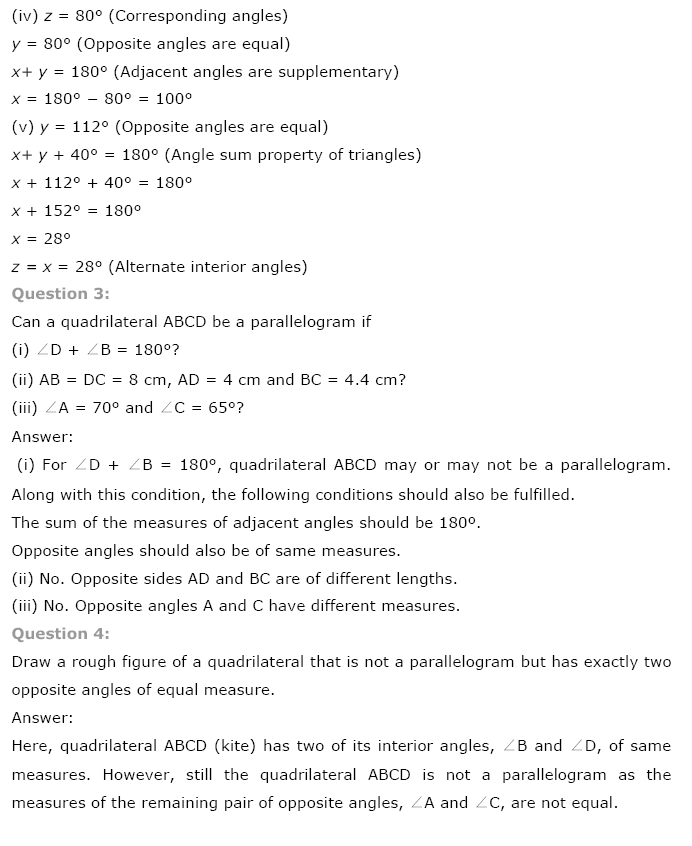
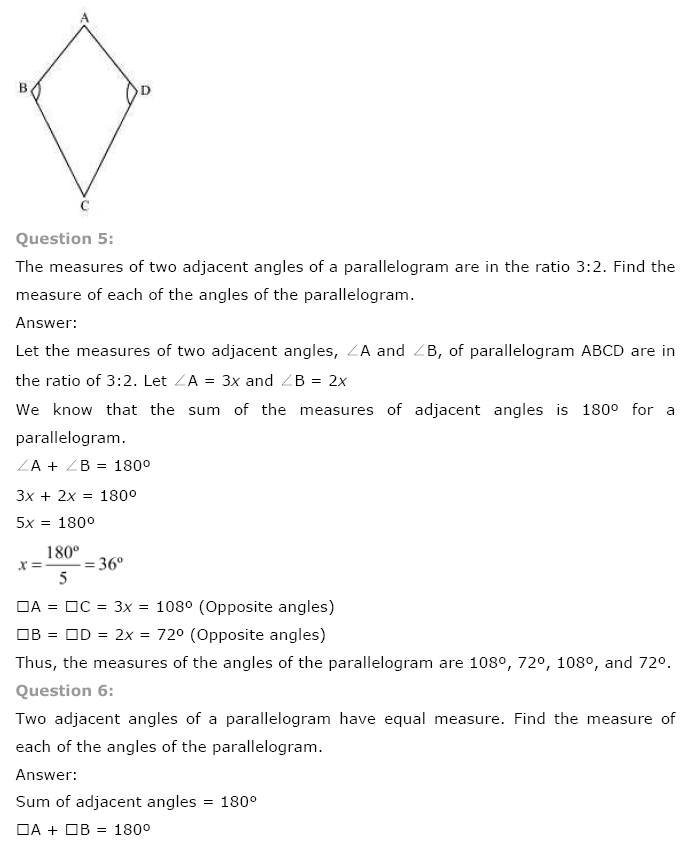
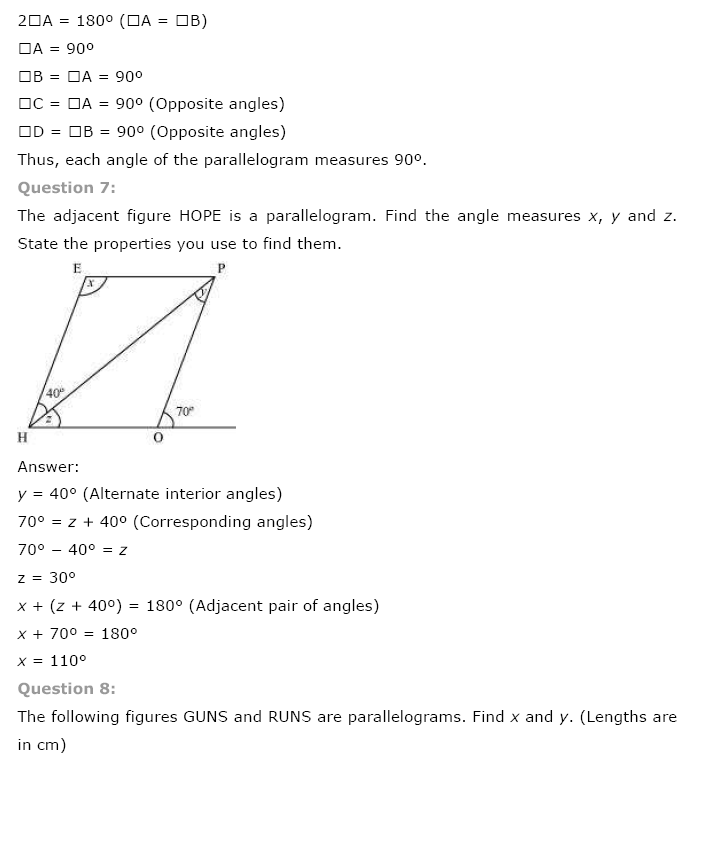
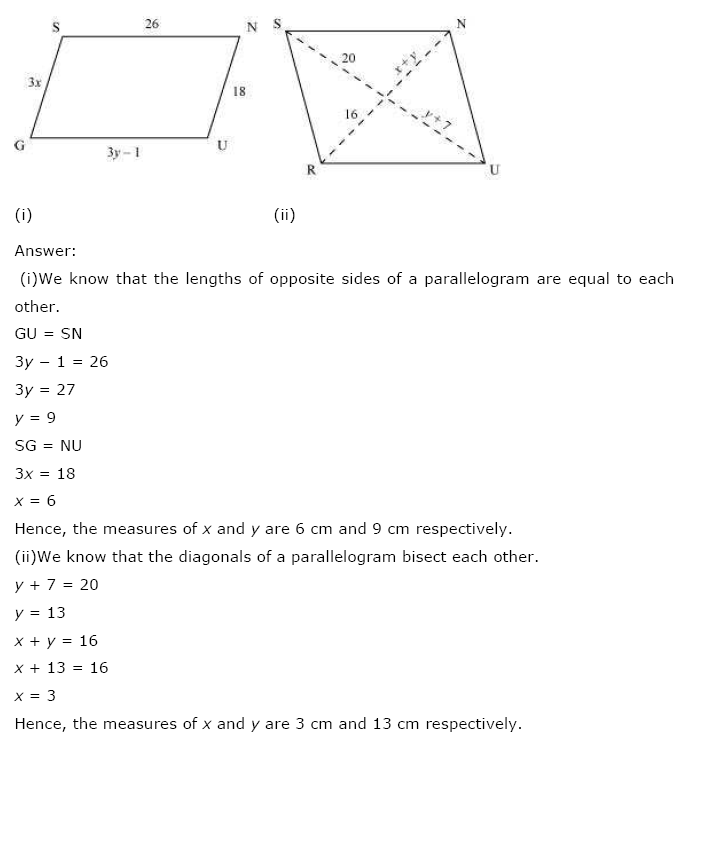
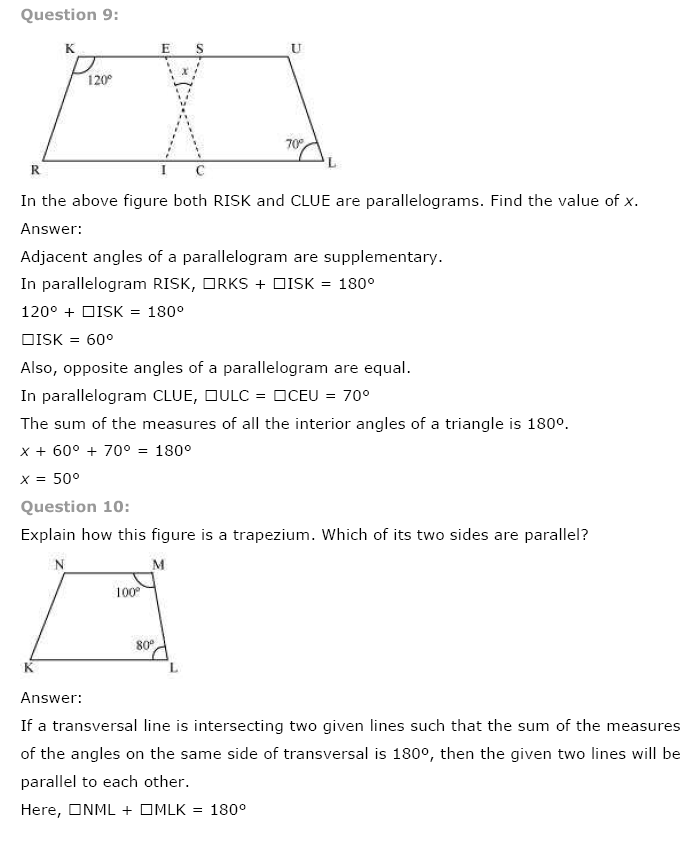
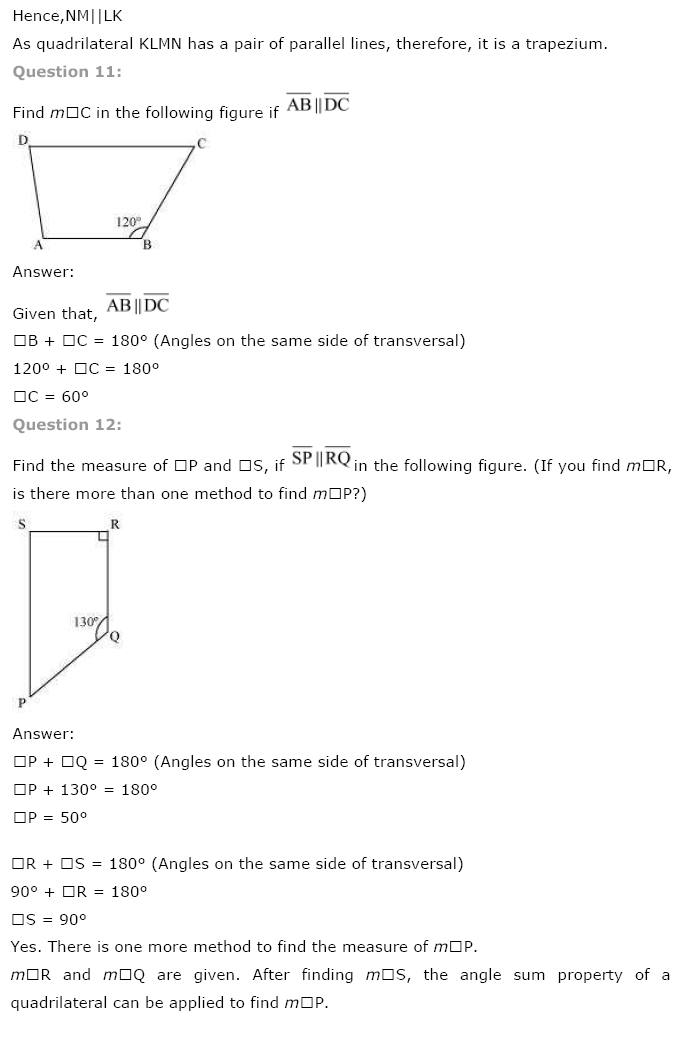
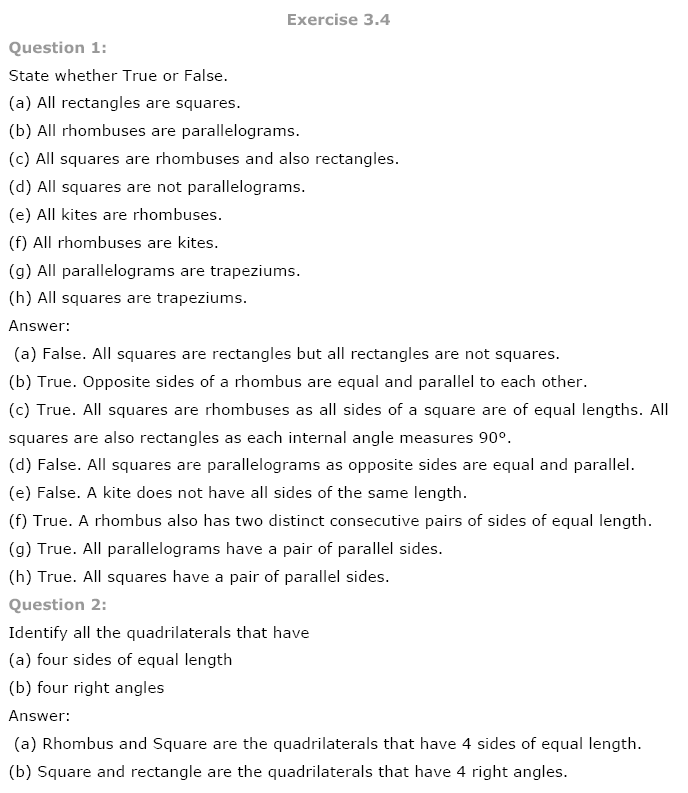
Ch:4 Practical Geometry
Ex 4.1 Class 8 Maths Question 1.
Construct the following quadrilaterals.
(i) Quadrilateral ABCD
AB = 4.5 cm, BC = 5.5 cm, CD = 4 cm, AD = 6 cm, AC = 7 cm
(ii) Quadrilateral JUMP
JU = 3.5 cm, UM = 4 cm, MP = 5 cm, PJ = 4.5 cm, PU = 6.5 cm
(iii) Parallelogram MORE
OR = 6 cm, RE = 4.5 cm, EO = 7.5 cm
(iv) Rhombus BEST
BE = 4.5 cm, ET = 6 cm
Solution:
(i) We have to draw first rough sketch.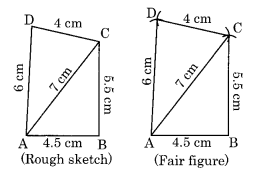
Construction:
Step I: Draw AB = 4.5 cm
Step II: Draw an arc with centre B and radius 5.5 cm.
Step III: Draw another arc with centre A and radius 7 cm to meet the previous arc at C.
Step IV: Draw an arc with centre C and radius 4 cm.
Step V: Draw another arc with centre A and radius 6 cm to cut the former arc at D.
Step VI: Join BC, AC, CD and AD.
(ii) We have to draw the first rough sketch.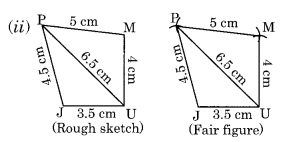
Thus ABCD is the required quadrilateral.
Construction:
Step I: Draw JU = 3.5 cm.
Step II: Draw an arc with centre J and radius 4.5 cm.
Step III: Draw another arc with centre U and radius 6.5 cm to meet the previous arc at P.
Step IV: Join JP and UP.
Step V: Draw an arc with centre U and radius 4 cm.
Step VI: Draw another arc with centre P and radius 5 cm to meet the previous arc at M.
Step VII: Join UM and PM.
Thus, JUMP is the required quadrilateral.
(iii) We have to draw the first rough sketch.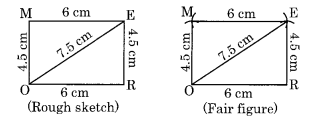
Construction: (Opposite sides of a parallelogram are equal)
Step I: Draw OR = 6 cm.
Step II: Draw an arc with centre R and radius 4.5 cm.
Step III: Draw another arc with centre O and radius 7.5 cm to meet the previous arc at E.
Step IV: Join RE and OE.
Step V: Draw an arc with centre E and radius 6 cm.
Step VI: Draw another arc with centre O and radius 4.5 cm to meet the former arc at M.
Step VII: Join EM and OM.
Thus, MORE is the required parallelogram.
(iv) We have to draw first rough sketch.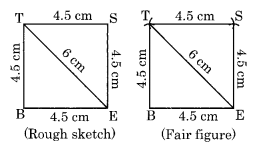
Construction: (All sides of a rhombus are equal)
Step I: Draw BE = 4.5 cm
Step II: Draw an arc with centre B and radius 4.5 cm.
Step III: Draw another arc with centre E and radius 6 cm to meet the previous arc at T.
Step IV: Join BT and ET.
Step V: Draw two arcs with centres E and T with equal radii 4-5 cm to meet each other at S. .
Step VI: Join ES and TS.
Thus, BEST is the required rhombus.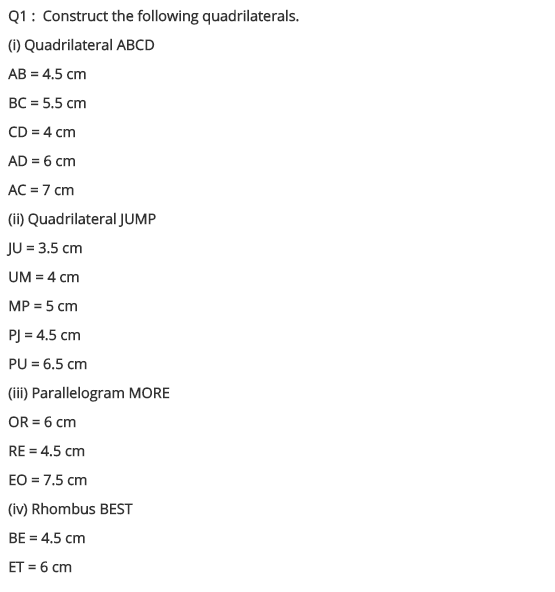
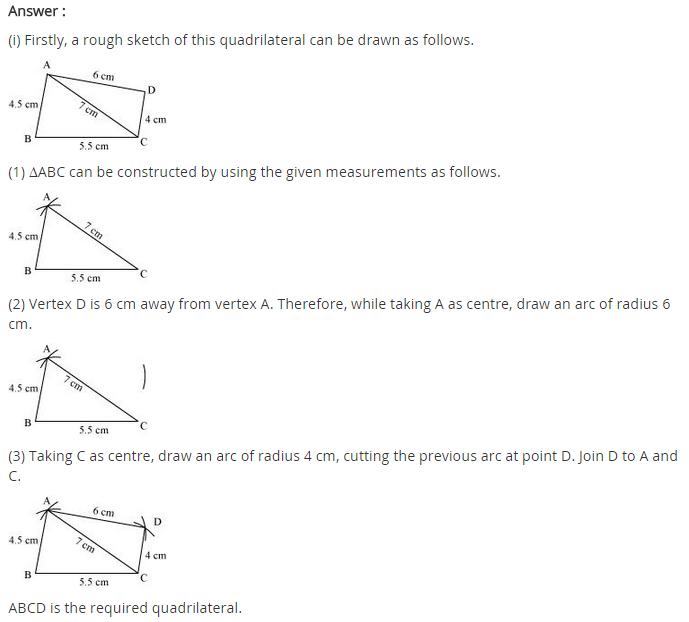
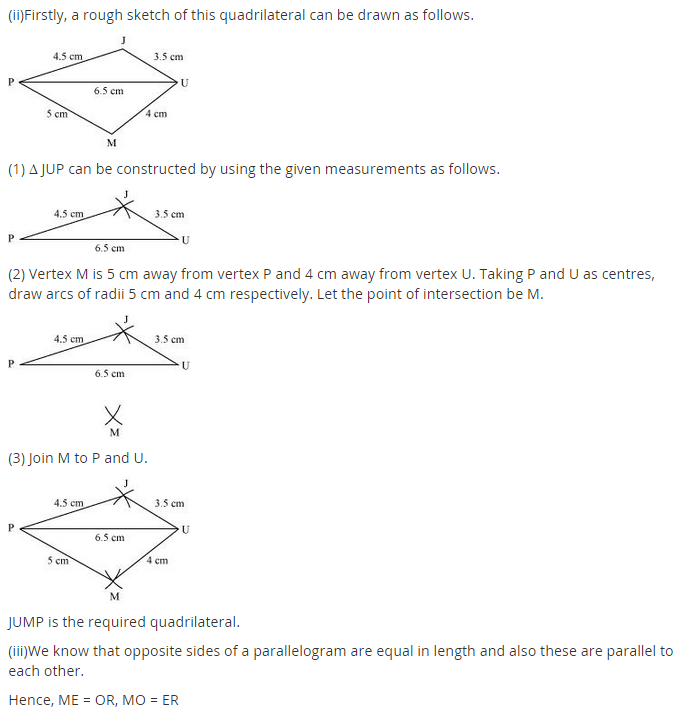
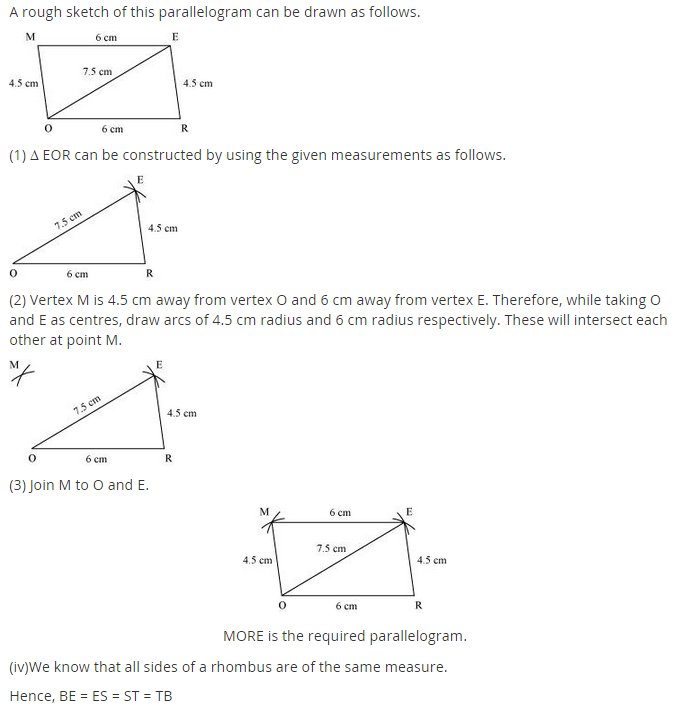
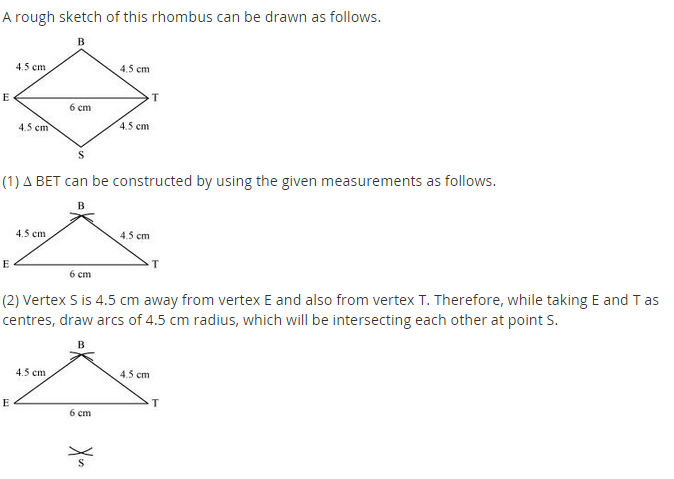
Comments
Post a Comment